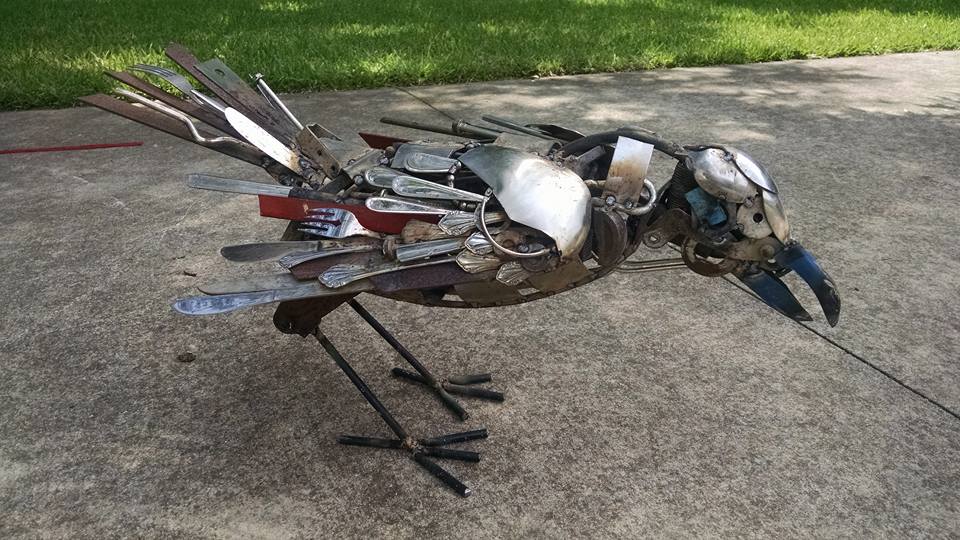As I wrote yesterday, Scott Wolter communicated to me that he was no longer interested in participating in my upcoming class. He told me in the email that it was because Jason Colavito would also be involved in the class (here is Jason's take). Given that Colavito would be participating at a different time and discussing totally different topics, it seemed like a strange decision to me. For that reason, I chose to let Wolter be the one to explain it if he cared to. It didn't take long for "Hutton Pulitzer" to show up on my blog and demonstrate, again, his aversion to factual accuracy. "Hutton Pulitzer's" comment provided information about Wolter's decision that I did not. So now it's a topic for discussion.
Scott Wolter decided not to participate in the class because Jason Colavito was also participating.
The alert reader will have noticed my use of quotation marks around "Hutton Pulitzer." As several people commented on yesterday's post, the language used by "Hutton Pulitzer" is distinctly un-Pulitzer-like, being largely devoid of typos, lacking the USE OF ALL CAPS, and written in more-or-less readable English. I have no way of knowing for sure, but it is plausible that "Hutton Pulitzer" was actually Scott Wolter in disguise.
Whether or not "Hutton Pulitzer" was Pulitzer himself or Wolter in a Pulitzer mask, my feelings are the same: good riddance. Team XplRr has passed my tolerance threshold for absurdity.
I'm a professor at an R1 university. I have a PhD. I do real archaeology and I teach students how to do real archaeology. The Forbidden Archaeology course is designed as an exercise in evidence-based critical thinking and communication. It exists to demonstrate to students that we have mechanisms for discerning credible from non-credible explanations of the human past. Not all ideas we have and stories we tell about the past can be correct, so how do we figure out which ones we can throw out? As I've written several times, the lack of a falsification mechanism is one of the hallmarks of pseudo-science. Holding ideas up to evidence-based scrutiny is what archaeologists do. If you're not doing that, you're not doing science. Forbidden Archaeology is designed to help students learn how to critically evaluate competing narratives about the past.
For a class like this to work, there has to be a free flow of ideas and information. Period. The title of the course is tongue-in-cheek: in my book there really is nothing that is "forbidden." As long as we have some mechanism for measuring the credibility of ideas and evidence, there's no reason to be afraid of examining any claim about the past. When some ideas or pieces of evidence are put "off limits," science begins to break down. It's okay to have vigorous disagreements, but at some level you have to agree on what constitute "facts" and "evidence." Even in a dojo, where combat arts are learned and exercised, there are rules to be followed.
When I talked to Wolter earlier this summer, I thought we had a meeting of the minds about the goals of the class and what we'd be doing. My intent was to have Wolter help us have a good, aggressive discussion of the Kensington Rune Stone, an object that remains enigmatic to this day. The students would have prepared themselves for Wolter's visit, and my hope was that they could experience some really interesting firsthand interactions with someone who has spent a lot of time and effort developing and defending his ideas about the stone.
I made it clear to Wolter in our phone call that I had no interest in having Pulitzer involved in any way. In my judgement, Pulitzer's history of misrepresentations and legal threats makes him unsuitable for interactions with my students. Based on my own history of interactions with Pulitzer, that's a pretty easy call to make.
But it appears now that when you're talking to Wolter you're also talking to Pulitzer (perhaps literally). So there's really no way around it: whether Pulitzer speaks for Wolter or Wolter is pretending to be Pulitzer, it's monkey business that has no place in my classroom. What's next? Demands to remove all the brown M&M's? No matter how I look at it, I cannot now imagine a good interaction with the Pulitzer-Wolter show. It's pretty weak sauce, and I'm no longer interested. The Wolter visit is off the table. What they decide to do with their partnership is none of my business, and that's the way it's going to stay.
I'm looking at other options for discussing different facets of the KRS. I've heard from several interested people already, and I'm considering several approaches that will let me meet the educational goals of the class. I wish the Wolter scenario would have played out differently, but it's just absurd to me that an invited guest (and/or his uninvited business partner) would attempt to exercise control over my syllabus. I have never misled anyone about the goals and content of this class. Forbidden Archaeology is going to be fun and educational for all involved. I will work as hard as I can to make that happen. Wolter and Pulitzer won't be a part of that. Moving on.
That's about all I have to say about this situation at the moment. I'll keep you posted as I move forward.
On a different note, I spent my morning working on this sculpture of a crow. I'm posting an "in progress" picture because I think it's looking pretty good so far. I may enter it in the state fair.
Oh wait . . . maybe the crow is related: "Nevermore" . . . (thanks, Hartman Krug).



 RSS Feed
RSS Feed
